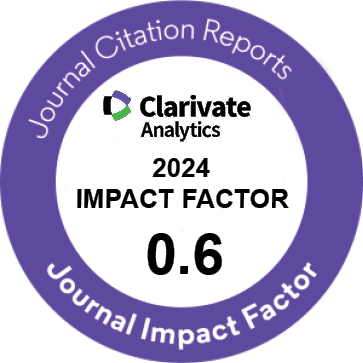
| Short Communication | |
| Association of Meconium-Stained Amniotic Fluid With Umbilical Cord Arterial Blood Gas Parameters and Apgar Score: A Brief Report | |
| Behnaz Nouri1, Fahimeh Niazadeh2, Parichehr Pooransari3, Maliheh Arab4 | |
| 1Preventative Gynecology Research Center, Shahid Beheshti University of Medical Sciences, Tehran, Iran 2Shahid Beheshti University of Medical Sciences, Tehran, Iran 3Department of Obstetrics and Gynecology, Shohaday-e Tajrish Hospital, Shahid Beheshti University of Medical Sciences, Tehran, Iran 4Department of Gyneco-Oncology, Shahid Beheshti University of Medical Sciences, Tehran, Iran |
|
|
IJWHR 2024; 12: 142-146 DOI: 10.15296/ijwhr.2023.43 Viewed : 53425 times Downloaded : 6101 times. Keywords : Meconium, Meconium aspiration syndrome, Amniotic fluid, Blood gas analysis, Umbilical cord |
|
| Full Text(PDF) | Related Articles | |
| Abstract | |
Objectives: Meconium-stained amniotic fluid (MSAF) increases the risk of morbidity and mortality of neonates. Meconium aspiration syndrome (MAS) can end in hypoxemia, hypercarbia, and acidosis. The aim of this study was to compare the results of umbilical cord arterial blood gas (ABG) analysis and Apgar score of the neonates with and without MSAF. Materials and Methods: Of all women (N=2037) who gave birth by caesarean section at Shohadaye-Tajrish hospital from 2015 to 2018, 100 women with MSAF were considered as the case group and 100 with normal amniotic fluid as the control group. The gestational age (GA) at caesarean delivery, neonate’s gender, 1 and 5 minutes Apgar scores (AS), and results of umbilical cord ABG analysis were compared between the groups using chi-square and t test. Statistical analysis was performed using SPSS version 24.0. Results: The case group had a higher mean GA (39.19±1.52 weeks vs. 38.57±0.671; P < 0.001) and the control group had a higher mean 1-minute AS (9.58±0.25 vs. 8.47±0.327; P < 0.001), while the distribution of the neonate’s gender and frequency of low/normal 5-minute AS were not different between the groups (P > 0.05). The control group had a higher mean pressure of oxygen (32.44±24.89 vs. 25.83±16.63; P = 0.029); other parameters were not different between the two groups (P > 0.05). Conclusions: The lower pressure of oxygen in neonates with MSAF, despite no difference in acidosis suggest that various factors have to be considered in order to differentiate pathologic and physiologic MSAF. |
Cite By, Google Scholar
PubMed
Online Submission System
 IJWHR ENDNOTE ® Style
IJWHR ENDNOTE ® Style
 Tutorials
Tutorials
 Publication Charge
Women's Reproductive Health Research Center
About Journal
Publication Charge
Women's Reproductive Health Research Center
About Journal
Aras Part Medical International Press Editor-in-Chief
Arash Khaki
Mertihan Kurdoglu Deputy Editor
Zafer Akan























